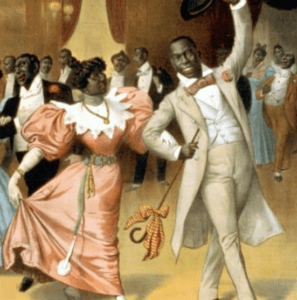The history of Ragtime music in the black community is a very complicated one. While it was a important aspect of black culture and music, it is also deeply rooted in a very derogatory and hurtful history as well.
Even though Ragtime music formally got it’s name in the 1890’s, it was around and known before that. Ragtime was created mostly by African American artists who did not read or compose music. It was more so a playing style that came to be, than something that was necessarily created. This style was usually played in brothels, saloons, bars and other places that were performance friendly. The music style embodies fluidity and versatility, sampling styles from jazz to classical.
One popular example of a “ragtime” song is “Good Enough!” by Rollin Howard. The song depicts the happiness of a couple that cater to each others needs. The male sings “If it is good enough for Hannah, its good enough for me!” This implies that if his significant other is happy, he is happy.
While that aspect of ragtime was crucial for black culture and black musicians, cake walks on the other hand weren’t. The cake was dance was a form of dance that ridicules upper class white behavior as a form of entertainment to white people. It was primarily used in slavery as a means of entertainment for the white masters, but later evolved to freed blacks turning it into a career. In slavery, the best preformance was usually awarded with a cake. While the practice wasn’t necessarily harmful, black bodies were still being used a vehicles for white entertainment even if they were mocking white people. Black people in America were barely even viewed as humans, so it was fun for white people watching blacks mock a status they wouldn’t achieve.
In addition to cake walks, coon songs were also a harmful and hurtful aspect of ragtime music. Coon songs were a based on stereotypes of black people, such as big lips, wide noses and darker skin, that were manipulated and exaggerated so white people could further disrespect blacks. These songs were preformed by white men and women, who dressed up as black people, who sung and danced around mocking black traits and mannerisms.


To conclude, while it is important to learn and celebrate the musical creations of Ragtime, it is also critical to note the harm that assisted it.



